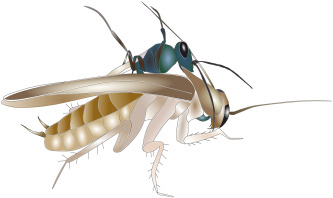
# Shore Crabs Experience Pain: Groundbreaking Findings from the University of Gothenburg
A revolutionary study carried out by scientists at the University of Gothenburg has yielded the first direct neural evidence demonstrating that shore crabs (Carcinus maenas) interpret painful stimuli within their central nervous systems. This monumental discovery, enabled by sophisticated electrophysiological recordings, carries significant implications for the welfare of crustaceans and our moral responsibilities when engaging with these aquatic organisms.
## Unprecedented Discoveries in Crustacean Neuroscience
PhD candidate Eleftherios Kasiouras, under the guidance of esteemed zoophysiologist Dr. Lynne Sneddon, illuminated the neural mechanisms of shore crabs subjected to potentially detrimental stimuli. The research team performed in vivo brain activity recordings while applying mechanical pressures and chemical irritants to various segments of the crabs’ bodies. The results indicate that shore crabs possess nociceptors—specialized sensory receptors that respond to damaging or noxious stimuli—and show nervous system reactions that suggest pain perception.
“We must discover less painful methods for killing shellfish if we intend to keep consuming them,” remarked Dr. Sneddon. “We now have scientific proof that they can feel and respond to pain.”
## Key Discoveries: Crabs Show High Sensitivity
This groundbreaking study uncovered several striking insights regarding the sensitivity of shore crabs to harmful stimuli:
1. **Superior Sensitivity Across Various Body Areas**
The crabs’ ocular regions and leg joints exhibited remarkable sensitivity, reacting to mechanical pressures as light as 0.008 grams. This degree of sensitivity greatly exceeds that observed in other species, including fish (0.1 grams) and humans (0.6 grams). Specialized sensory responses noted in the crabs’ antennae indicated that certain body regions are exclusively responsive to chemical stimuli.
2. **Diversity in Sensitivity Based on Stimulus Type**
Mechanical stimuli caused brief, intense neural excitations, while chemical irritants such as acetic acid elicited sustained reactions within the crabs’ central nervous systems. This variation implies that crabs may handle the two types of stimuli via different neural pathways.
3. **Concentration-Dependent Tissues Impairment**
When subjected to high concentrations (5%) of acetic acid, the crabs’ receptors sustained damage, becoming unresponsive to subsequent stimuli. Optimal sensitivity was seen at intermediate concentrations (1%), which were adequate to provoke measurable neural reactions without causing enduring tissue damage.
4. **Relevance for All Crustacean Species**
Although the focus of the study was on shore crabs, the implications may extend to other crustaceans such as lobsters, shrimp, and crayfish. “All creatures require some form of pain system to avoid hazards,” Kasiouras stated. “Similar nervous system architectures across different species suggest these findings are likely applicable to crustaceans as a whole.”
## Implications for Crustacean Well-Being
The findings of this study have significant ethical and practical ramifications. For many years, discussions have swirled regarding the capacity of crustaceans to feel pain, with detractors often referencing the lack of scientific support for central processing of harmful stimuli as a basis for their views. The revelation of nociceptor activity and neural engagement in shore crabs now shifts the balance of evidence towards the conclusion that crustaceans indeed experience pain.
For the seafood sector and its consumers, these outcomes necessitate a reevaluation of conventional practices regarding the capture, transportation, and preparation of crustaceans for consumption. Methods such as boiling lobsters alive or amputation may inflict severe pain, raising ethical concerns. Dr. Sneddon underscores the importance of addressing these ethical issues: “We must seek less painful methods to interact with and process shellfish, particularly if we wish to maintain a balance between culinary traditions and animal welfare.”
## Glossary of Important Terminology
– **Nociceptors**: Sensory receptors in living organisms that react to potentially harmful stimuli by transmitting signals to the central nervous system.
– **Electrophysiology**: The investigation of electrical activity in biological systems, such as neural or muscular signals, frequently utilized to comprehend brain and nerve functions.
– **Central Nervous System (CNS)**: The segment of the nervous system encompassing the brain and spinal cord, responsible for interpreting sensory information and coordinating bodily reactions.
## Broadening Ethical Scientific Inquiry
This research represents a vital advance in understanding how marine invertebrates perceive and respond to pain. Notably, it further illustrates the potential of scientific inquiry to enhance and refine ethical decision-making in human interactions with the animal kingdom. Moving forward, this information may facilitate humane advancements in the seafood industry and elevate awareness of the intricate inner lives of sea creatures.
—
### Test Your Knowledge
1. **What techniques were employed to investigate the crabs’ reactions to harmful stimuli?**
Researchers applied mechanical pressures (utilizing von Frey hairs) and chemical irritants (acetic acid) while conducting recordings